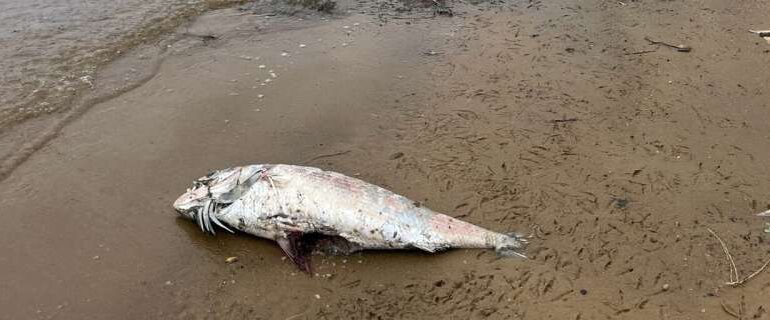Researchers Identify Algae Species Behind South Australia’s Crisis

Researchers have made a crucial breakthrough in understanding the harmful algal bloom plaguing the South Australian coast by identifying the primary species responsible for mass marine animal deaths and potential human health risks. The findings, presented on November 13, 2025, at the 21st International Conference on Harmful Algae in Chile, reveal that the neurotoxin-producing microalgae species Karenia cristata is the dominant strain discovered in samples collected over the past seven months.
Led by Professor Shauna Murray of the University of Technology Sydney, the research involved collaboration with the South Australian Research and Development Institute and the state’s Department of Primary Industries and Regions. Experts from Australia, New Zealand, and the UK contributed to this significant investigation.
Impacts of Brevetoxin
Professor Murray highlighted that K. cristata is one of the few algae species known to produce an abundant amount of the neurotoxin called brevetoxin, previously attributed mainly to Karenia brevis. “Harmful algal blooms dominated by brevetoxin-producing Karenia are well-documented in isolated regions worldwide, especially along the southeastern coast of the United States,” she noted. “Yet, this represents the first occurrence of such a bloom in Australia.”
Brevetoxins pose a substantial threat, capable of killing marine animals across the entire food chain, from zooplankton and invertebrates to fish, birds, and marine mammals. The toxins can also become aerosolized, leading to respiratory distress in humans and accumulating in seafood, which can cause neurotoxic shellfish poisoning.
The species K. cristata has been previously reported in only two locations globally: False Bay and Walker Bay in South Africa during the mid-1990s, and a remote island off the coast of Newfoundland in Canada. However, the specific species responsible for those incidents remained unidentified, and no brevetoxin presence was detected at that time.
Ongoing Investigations and Environmental Concerns
According to Professor Murray, the current situation ranks among the most impactful of the 849 marine mass animal mortality incidents documented in an international harmful algal database. Researchers are now examining the ecological conditions that allowed this harmful algal bloom, particularly focusing on the proliferation of K. cristata.
While it is too early to determine the exact influence of rising ocean temperatures and increasing nutrient levels on coastal phytoplankton blooms globally, understanding how changing marine environments contribute to the occurrence and intensity of harmful algal blooms is vital. “We are investigating whether K. cristata has long been present in Australian waters or whether it has recently established itself,” she added.
Addressing marine microbial diversity, including less prevalent species, needs to be prioritized to mitigate potential future harmful algal blooms. With Australia’s coastal waters rapidly warming, the need for comprehensive research is critical to prepare for the impacts on marine ecosystems.
The ongoing investigation aims not only to understand the current crisis but also to establish strategies to manage and reduce the risks associated with harmful algal blooms in the future.






